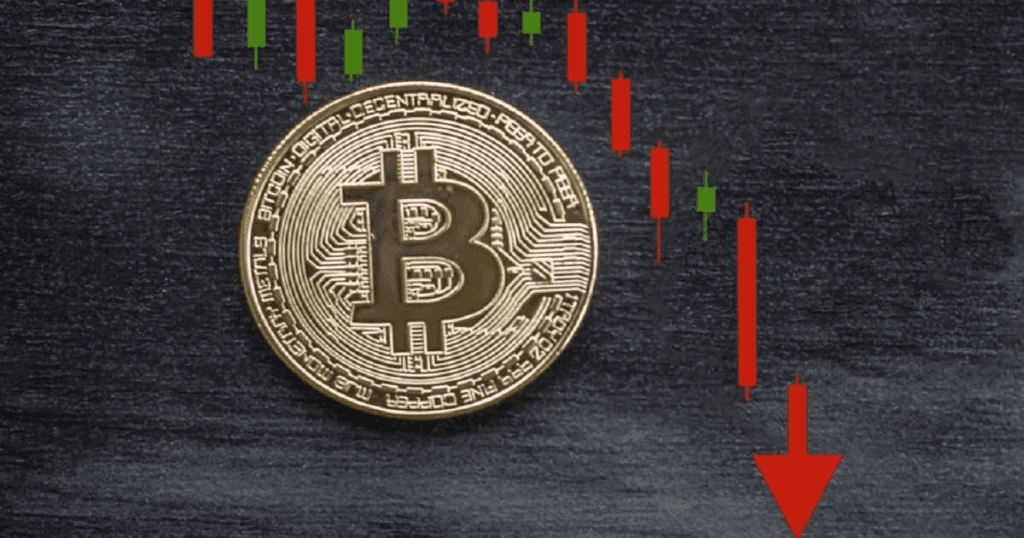
Several factors can contribute to a falling market such as exchanges crashing, rising interest rates, inflation, regulatory factors, and several other factors that can directly affect how confident traders, investors, and everyday crypto users feel when investing their money in these assets.
And when prices fall rapidly, especially for top cryptocurrencies like Bitcoin, it may force some traders, and investors to withdraw their funds from the market to meet other obligations causing the market to fall even more.
Therefore, this article will guide you in trading BTC, especially in a falling market. Keep Reading!
Key Takeaways
• Cryptocurrencies are volatile assets, so it’s very important to know how much you stand to lose and gain at any point, especially in a falling market.
• Some of the factors that cause a collapse in the crypto market include rising interest rates and inflation can push values down as well as the systemic issues within crypto.
• Although the crypto market is steadily rising back from a huge plummet in value as of 2022, the values of these assets are slowly rising.
• As of 11th of November, 2022, exchanges FTX and FTX.US filed for Chapter 11 bankruptcy.
• In May 2022, the cryptos such as TerraUSD collapsed, and multiple crypto platforms folded in the aftermath.
• According to some crypto investors, the best time to buy bitcoin is during price dips although it is not without risk because what seems like a dip might just actually be the start of a long-term decline in prices.
SEE ALSO: Crypto Market Cycles (What You Need To Know)
SEE ALSO: 7 Tips To Handle Crypto Market Volatility
SEE ALSO: 10 Tips For Day Trading Crypto in a Bearish Market
How To Trade BTC in a Falling Market
1. Buying the dip using dollar-cost averaging

This is one of the ways by which you can trade BTC in a falling crypto market, because it’s very easy for traders, and investors to fall on the wrong side of the market especially when the market is in a free fall.
However, this does not necessarily signify that you just sit back and watch your assets plummet and your portfolio reduces every hour.
As a trader or investor, you must ensure you keep back some of your capital/ profits either in Fiat currency or stablecoins to give you the opportunity of buying the dip (that is the practice of buying a certain amount of cryptocurrency after it has dropped in price).
The idea here is that when the prices return to their previous highs, you will then be able to resell them and make profits.
Although you can buy the dip with just a single trade, it is more advisable to use “dollar-cost averaging (DCA).” That is, you divide your reserve funds into smaller portions and make several trades over time.
eg let’s say you have $2,000 worth of BTC in reserve funds for trading, a good dollar cost averaging strategy you can use is to divide that amount into 10 portions of $200 or rather, 20 portions of $100 and place your trades using these smaller amounts.
The goal here is to prevent you from putting all your funds into trade in one go because it’s difficult to know exactly when BTC has reached its lowest, so it is better to buy in smaller amounts and wait to see if the price will fall the more.
And even if it does, you can buy a little more. This will help you be better positioned against the risk of losing all your BTC in a single trade.
SEE ALSO: 5 Tested Ways of Buying the Dip in the Crypto Market
2. Diversify your investments across different crypto assets
Another way you can trade BTC in a falling market is to invest across different crypto assets and not necessarily really on just Bitcoin alone.
Just so you know, it’s nearly impossible to accurately predict when a crypto market will stop falling, just as it’s impossible to determine precisely which of the 17,000+ cryptocurrencies available in the crypto market will recover the fastest or climb to the peak with time.
Some of the factors you can consider in diversifying include past performances of these assets, previous all-time highs, and upcoming roadmap announcements.
3. Don’t freak out
Yes, don’t freak out! Managing your emotions as a trader, or investor during a falling market may not sound so easy because it is one of the hardest skills to master in professional crypto trading.
You must recognize that fear and greed are of course motivators that can often lead traders into making terrible decisions that may eventually lead you to lose your BTC in trades.
Ensuring that you have a solid plan in mind before placing your BTC in trades would be the huge difference between making profits and losing your portfolio.
Therefore always ensure you take profits (don’t allow greed to keep you trading beyond your take profit level hoping the asset would take an even higher leap or rise higher in price which is most times never the case), and reserve some trading capital and keep your cool even if the market eventually crashes.
4. Do nothing, wait until the trend changes
Yes, read the heading again! Trading BTC especially in what seems like a bear market is quite hard because, at that moment, your capital and portfolio preservation should be at the topmost of your priorities.
So, it’s sometimes good for you as an investor to just calm down and wait until you can confirm there is a change in trend.
Falling markets have the likelihood of sucking your portfolio and reducing its size, so it’s not advisable you trade against the trend unless you have PNL (Profit and Loss)positive method for trading in a falling market and some skill at shorting.
Frequently Asked Questions (FAQs)
Q1. Should you sell Bitcoin when it drops?
Well, there is no specific rule guiding whether to sell or buy when Bitcoin drops.
However, it is recommended that you don’t sell due to panic, especially if you think it has a long-term value, or else you might regret selling it later on when it’s on the rise again.
Final Thoughts
Trading BTC in a falling market is like going into the future with a high level of uncertainty, not knowing if the market will fall even further or end sooner than anticipated.
This article is not to scare you or motivate you into trading without a strategic plan such as channeling your frustrations of missing the opportunities of buying the previous dip into buying just anyone that suddenly resurfaces (this might likely be another crypto crash in disguise!).
Therefore always ensure you have some funds in reserve and most importantly always DYOR and plan before any trading decisions.
Read More




